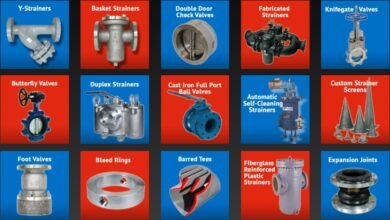DMA for Futures and Options Trading

Futures and options are the segments of the market from where traders can derive multiple opportunities. Trading with futures and options requires traders to understand and acumen the aspects relating to it.
Futures and options are derivative, and their value is directly proportional to the underlying script or asset. Both the derivatives have an expiry date, and buyers and sellers need to buy or sell the same on or before the specified date. They choose to trade with these as they offer much more benefits than several other trading methods or segments.
Traders can find future and options derivatives of several other underlying assets like shares, stock market indices, commodities, ETFs, etc. Traders may have a low-risk trading experience with the pre-determined price these contracts offer. Success or failure in trade is dependent on the skill of traders and the fairness shown by the market. So, traders must acumen the aspects relating to this segment to efficiently speculate the aspects relating to the same.
Future and options follow a distinct path when it comes to rights and obligations offered by them. An individual needs to follow a future contract as per the pre-set date and pre-defined price. Traders get the right to exercise the same with an option contract.
In an option contract, traders receive the right to execute a contract. It completely depends on the position of the trader involved in trading. Contrary to it, traders must exercise the buy or sell in a future contract. Future and options contracts are further classified, and traders choose to go for a contract as per their trading strategy.
There are two types of options contracts, and they are call options and put options. Call options are positive elements and proceed linearly on buy or sell. Moreover, put options are negative elements and they react inversely to buy or sell. Traders may proceed to buy or sell these as per their speculation about the market or as per their trading strategy.
Traders can have a bullish and bearish position in the market by buying or selling the call options, respectively. Inverse to the same, a person has a bearish and bullish position on buying or selling the put options. There is further classification to the option contract as per their strike price.
There are three types of options as per the strike price. In-the-money, at-the-money, and out-the-money are the option contracts that are employed for trading. In the case of ‘in-the-money’ options, the strike price is below the existing market price of respective calls or puts. For ‘out-the-money’ options, the calls and puts have a lower and higher price than the current underlying price. For both call and put options, ‘at-the-money’ options have the closest price to that of the strike price of the associated underlying. So, selecting an option depends completely on the position of the market and speculation made by the trader regarding the same.
Options contracts also have some trading strategies associated with them. The two most common trading strategies are directional trading and non-directional trading. Traders employ these strategies as per inflation or deflation observed in the market.
Future contracts are also put in categories like options contracts. Primarily these types of future contracts traders choose for trading:-
Commodity Futures
Physical assets that traders can buy or sell are put under the segment named commodity. Oil, metals, natural gas, food grains, etc., are some of the most common commodities. Future derivatives of commodities are also financial instruments that are traded by traders most often.
Trading with commodity futures can turn out to be reasonably sound in some instances. These are one of the most reasonable ways to manage the risk associated with the market. Traders have the benefit of selling or buying the contract at the defined price despite a rise or fall in the market. With reasonable speculation, traders can maintain an advanced position in the market.
Currency Futures
Forex also offers traders future contracts, and traders can benefit from it by reasonably using the same. Traders involved in this trading agree to exchange the specified currency or currency pair at a specified price and date.
Derivatives can also be used to hedge against risk. For example, futures trading is a common risk management technique in the farming and agriculture sectors.
Bottom Line
Future and options contracts are derivatives, and traders based on market research and analysis can make their trading decisions. As per their conjecture about the market, traders may proceed to buy or sell a particular future or options contract. So, traders can add aid to future and option trading by using direct market access. DMA access trading facilitates traders with more flexibility for trading, and traders have a better environment for F&O trading. Traders may directly interact with exchanges by using direct market access trading.




